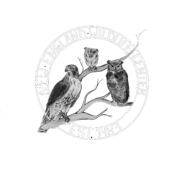The birds returning to Cape Cod right now are breaking all the travel and social distancing rules. They are flying great distances, landing in various locations, and congregating in groups of hundreds or thousands. The birds may be the only ones traveling anywhere right now. Luckily for us, their arrival will give us some great bird watching while we are at home quarantined.
The Atlantic Flyway is a major north-south flyway for migratory birds in North America. The route starts in Greenland, follows the coast of North America to South America and the Caribbean. Migratory birds travel this route every year. This route does not have mountains to block the path, and has good sources of water, food and cover over it’s entire length. The Atlantic Flyway is the most densely populated and intensively developed of the four flyways. The other flyways include the Central, the Pacific and the Mississippi. According to Audubon, about 500 bird species use the Atlantic Flyway.
Spring migration occurs in a mass movement. It takes place over a shorter period of time than the fall migration since birds are anxious to reach their breeding grounds and begin mating. From March until May you can see flocks making their way North all across the United States. Along the Flyway there are many key sites that migratory birds use to breed, feed or rest. Among the sites listed is the Cape Cod National Seashore. Migratory birds can be seen along the 40 miles of public beach and sand dunes.
Delaware Bay is another site, and is known for the importance of being a resting and feeding area for the Red Knot species. Red knots migrate 9,300 miles each way every spring and fall making this bird one of the longest distance migrants in the animal kingdom. They migrate in larger flocks than do most shorebirds, and break their migrations into 1500-mile non-stop segments. In the Delaware Bay area, they arrive in time for the Horseshoe Crab egg release. They arrive emaciated and eat constantly until they double their body weight before continuing on. There is ongoing concern about the decline in the Red Knot population. Initially they were threatened by hunting for sport and food. The passage of the Migratory Bird Treaty Act in 1918 helped increase their numbers. The next threat was the over-harvesting of horseshoe crabs. From the 1980’s-2000’s, there was a 75% decline in Red Knots. The Horseshoe Crab harvest is now managed specifically for the protection of the Red Knot population. This is one example of how human intervention of one species can affect other species at the same time, and how with the passage of rigid environmental laws the situation can improve.
While the Red Knots are marathon migrators, the Arctic Tern has the longest roundtrip migration every year of 25,000 miles. It flies from pole to pole, Arctic to Antarctica. The shortest migration is the North American Blue Grouse. It migrates from pine forests to deciduous woodlands, about 300 meters.
At the Center this year, we have wintered over a Broad Wing Hawk since last August who was not well enough to leave during his specific migratory window. The Broad Wing Hawk is one of only five North American Raptors that are complete migrants. They breed in the Eastern United States and Canada and migrate to wintering grounds in Southern Central America and South America. These hawks reduce their energy costs by migrating on mountain updrafts or thermals for soaring. These thermals are available from mid-September to mid-October. Our hawk will be released here when the conditions are warm enough for breeding. Broad wing hawks migrate in flocks called “kettles” that may have up to several thousand birds. This flocking helps facilitates an individual’s ability to find thermals and also aid in orientation and navigation. The hawks are one of the first to leave in the fall and the last to return in the spring. Most hawks pass through a check point called Hawk Mountain with 95% of them passing through in a 2-week window. This compressed early fall migration is a result of their dependence on thermals.
You can help migrating birds by providing them with a safe and welcoming place to rest, recover and refuel before they set out again. To make your yard enticing, set out a collection of feeders and waterers, and provide places to roost and shelter. Provide nest boxes and plant trees and bushes that create natural shelter. Move feeders to where predators can’t reach them. Then sit back and enjoy the show.

Recent Comments